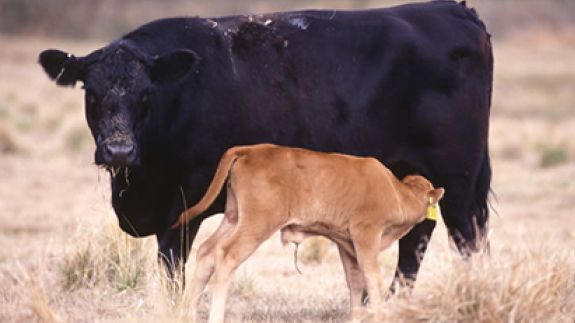
Agricultural News
Will it Pay to Retain and Background Calves this Year?
Wed, 05 Oct 2022 08:14:57 CDT
 Mondays, Dr. Derrell Peel, Oklahoma State University Extension Livestock Marketing Specialist, offers his economic analysis of the beef cattle industry. This analysis is a part of the weekly series known as the "Cow Calf Corner" published electronically by Dr. Peel and Mark Johnson. Today, Dr. Peel talks about the value of retaining and backgrounding calves this year.
Mondays, Dr. Derrell Peel, Oklahoma State University Extension Livestock Marketing Specialist, offers his economic analysis of the beef cattle industry. This analysis is a part of the weekly series known as the "Cow Calf Corner" published electronically by Dr. Peel and Mark Johnson. Today, Dr. Peel talks about the value of retaining and backgrounding calves this year.
In a recent presentation by Dr Derrell Peel, we were shown that projected value of gains for growing calves this winter are in the $1.35 to $1.40 per pound range, and has the potential to go even higher based on projections for available feeder cattle numbers next spring. What this means is if we can put gain on calves for less than the projected value of gain backgrounding our calves to higher weights should be profitable. Pasture is probably not an option, so calves may have to be fed all winter. This may be difficult to do this year with reports of hay sales in the country of $150 to $170 per bale and feed prices over $400/ton. Based on these feed prices, our most common feeding program of feeding free-choice hay and about 1% of body weight of a supplement would cost about $2.60 per day and around $1.63 per pound of gain with gains around 1.5 pounds per day. Other feeding programs may be more profitable, but are much more complex and management intensive. Limit feeding a higher concentrate grower diet to about 90% of projected free-choice intake could achieve gains of around 2 to 2.5 pounds per day that would cost $1.25 to 1.30 per pound of gain.
Be sure to feed calves appropriately. Neither excessively thin (body condition score 1, 2, or 3) nor excessively fat (body condition score 7, 8 or 9) would be considered ideal from a marketing perspective. Excessively fat or fleshy calves will be discounted because of reduced potential for gain. Overly thin cattle may (or may not) receive premiums because of the possibility of compensatory gains, but these premiums are never enough to make up for the reduced pounds of sale weight. Moderate flesh (body condition score of 4 or 5) should be the targeted condition at marketing. Body fat accretion rate occurs at different rates depending on the animal’s frame score, sex, post-weaning backgrounding gains, and growth promoting technologies used (for instance, implants and beta agonists).
How much gain should we try to put on calves during the backgrounding period? A medium frame steer weighing 450 pounds with an expected finished weight of 1,200 pounds and a beginning body fat percentage of 15% (BCS = 4) could gain 2.5 lbs/day and still only reach a body condition of 5 if marketed at 600 pounds. A medium frame heifer should only be pushed to gain 2.0 lbs/day, because fat deposits at a greater rate in heifers and expected mature weights are 100 pounds lighter. All targeted rates of gain depend on accurate estimation of mature weights previous nutrition and the use of growth promoting technologies.
Backgrounding programs are an important component of adding value to calves post-weaning. Cost effective nutrition programs should be designed to market these calves in the best possible manner.
WebReadyTM Powered by WireReady® NSI
Top Agricultural News
More Headlines...





